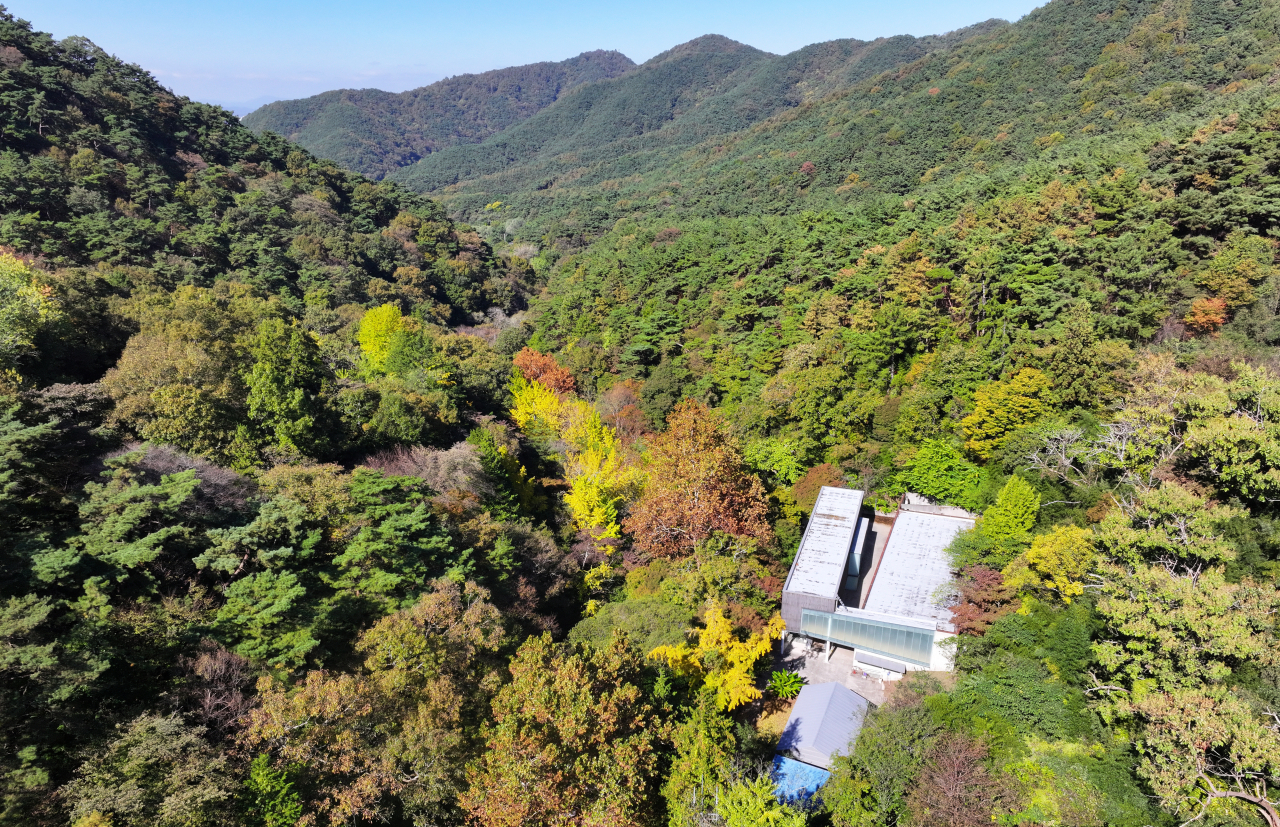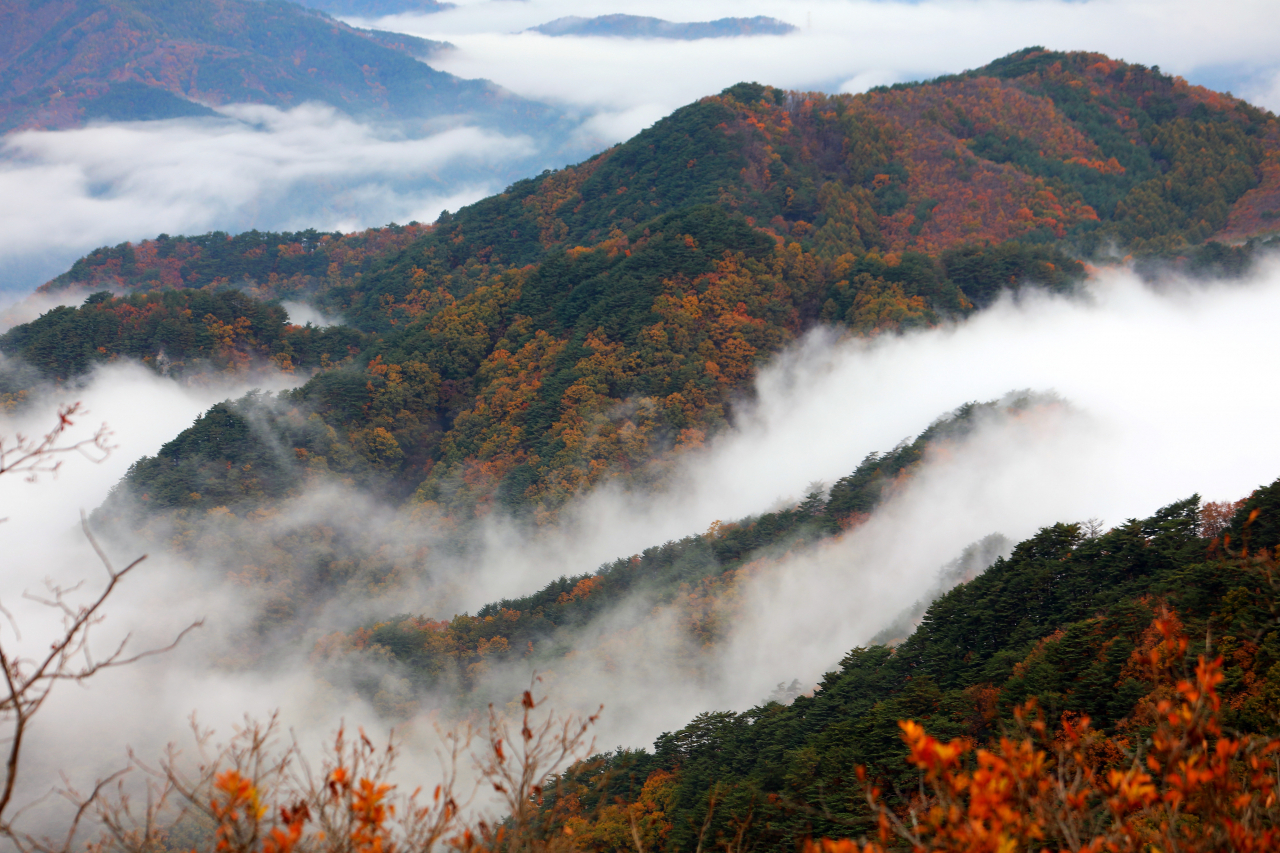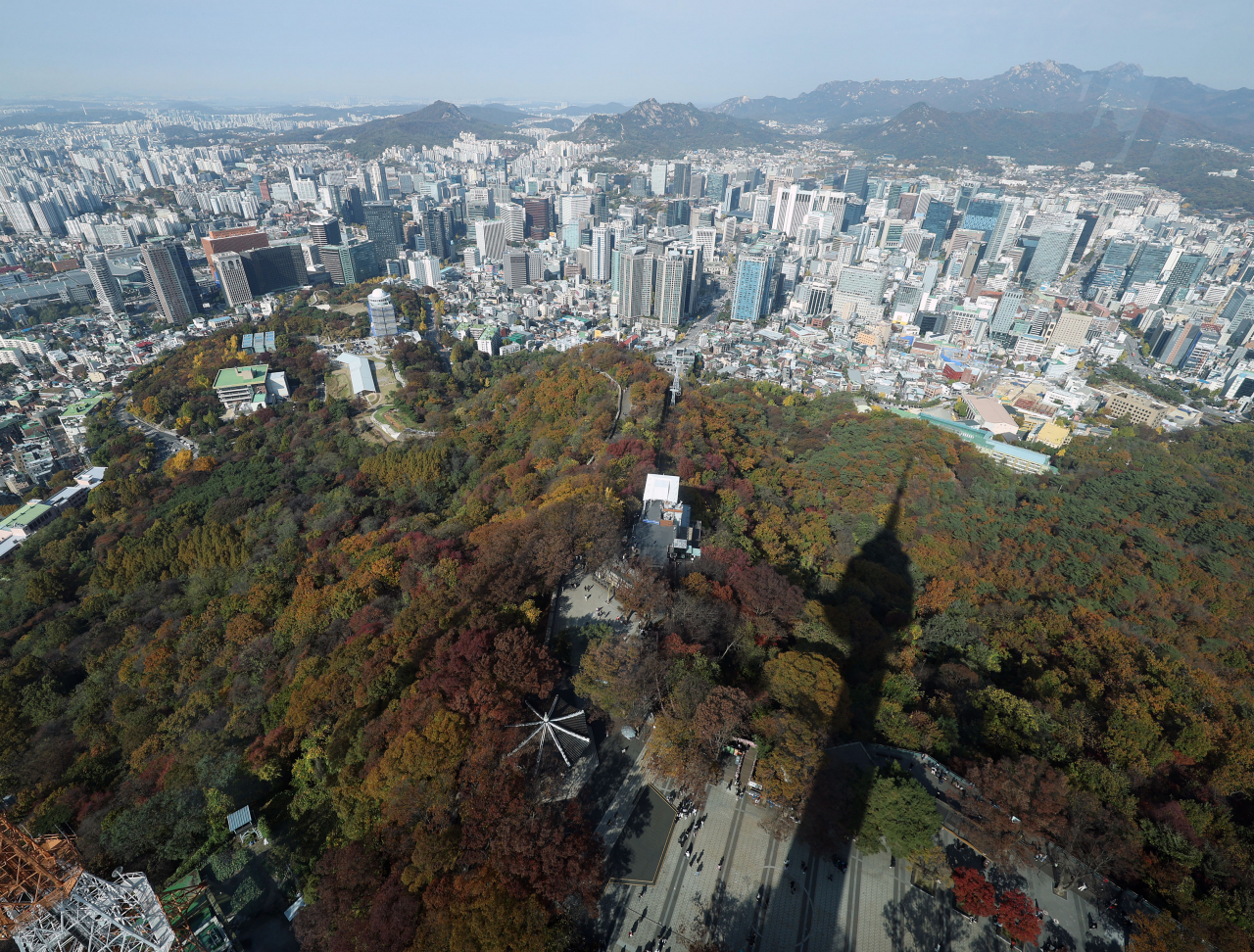 |
Mudeungsan in Gwangju is mostly covered with green leaves on Tuesday. (Yonhap) |
Unseasonably warm weather with day highs of around 20 degrees Celsius has delayed the autumn foliage peak, leaving large parts of Korea’s major foliage hotspots green as of Wednesday.
Of the 21 hotspots the Korea Meteorological Administration monitored, seven -- including Naejangsan in Jeongeup, North Jeolla Province, famous for its maple leaves -- had not reached their foliage peak Wednesday.
The KMA announces the “peak” when 80 percent of the place is covered with autumn foliage, usually by mid-November.
However, only about 20 percent of leaves had turned in Naejangsan on Thursday, eleven days later than the 1991-2020 average. The mountain’s foliage peak was Nov. 4 last year.
Gangwon Province’s Seoraksan also saw its foliage peak 12 days later than average years -- Oct. 29 – and it was the latest since the KMA began monitoring.
 |
Seoraksan is seen heading to the peak of its autumn foliage on Oct. 27 in Inje, Gangwon Province. (Yonhap) |
Travelers who visited some hotspots hoping to see the autumn views were disappointed.
A Naejangsan National Park official said in an interview with local media that there has been no significant difference is seen in the number of visitors this year, as people came expecting foliage to have turned already, based on what happened in previous years.
Some visitors expressed disappointment and the park has received a lot of phone calls asking about whether the trees were turning red, the official added.
 |
Namsan in central Seoul is partly covered with autumn leaves on Tuesday. (Yonhap) |
Foliage appears when a day’s lowest temperature goes below 5 degrees Celsius, and the prolonged hot weather is said to be the reason for the late peaks.
Seoul saw its day high of 25.1 C last Saturday and the average temperatures of this year have been higher than the previous year in every month.
The climate change is expected to push the foliage season later. According to the Korea Forest Service, the foliage of maple, oak and ginkgo trees has begun later by 0.39, 0.44 and 0.45 days respectively every year during the past decade.







![[Herald Interview] How Gopizza got big in India](http://res.heraldm.com/phpwas/restmb_idxmake.php?idx=644&simg=/content/image/2024/11/20/20241120050057_0.jpg)